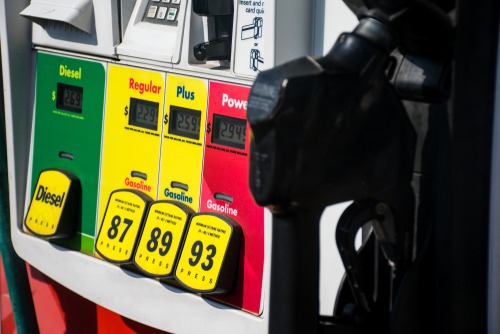Trading the Latest Energy Crisis, Diesel Fuel
Supplies of diesel fuel in the U.S. and Europe have fallen so low that estimates suggest there's only about a 25-day supply on hand in either region—pushing diesel prices toward all-time highs

Global energy markets have been shaken to the core in 2022, and the latest victim engulfed in the chaos appears to be the diesel fuel sector.
Supplies of diesel fuel in the United States and Europe have fallen extremely low with about a 25-day supply available in either region—assuming new supplies were cut off completely.
In the U.S., diesel stockpiles have been depleted to depths not seen since 2008. And despite a marginal slowdown in the U.S. economy, demand for diesel fuel remains very strong.
The last time diesel fuel was in such high demand was 2007, just before the global asset bubble popped amid the 2008-2009 Global Financial Crisis.
In Europe, supplies of diesel fuel have reached equally critical levels. Europe was already dealing with impaired access to imported energy as a result of the war in Ukraine. But things got even more complicated when refinery workers in France went on strike, creating a fresh bottleneck in Europe’s energy supply chain.
European diesel inventories are expected to hit a record low in February 2023.
The U.S. has been sending surplus supplies of crude oil and natural gas to Europe since the start of the Russian and Ukrainian war earlier this year. However, in the case of diesel fuel, the U.S. has recently been forced to claw back some transoceanic shipments of diesel in order to help alleviate the supply shortage in North America.
In October, Reuters reported that at least three ocean tankers filled with diesel fuel were re-directed to the U.S. The fully loaded tankers began their respective journeys in the Middle East and were originally bound for Europe.
Diesel prices have been rallying as supplies have dwindled. The national average for a gallon of diesel fuel in the U.S. is now hovering around $5.40, which is about $1.70 higher than it was a year ago.
The year-to-date high for diesel is about $5.80/gallon, and many expect a new high will be set at some point in Q4.
Diesel is a key cog in the U.S. economic machine, fueling millions of vehicles in the commercial shipping, construction, farming, and military sectors. That means expensive diesel represents yet another inflationary headwind for U.S. businesses and the broader U.S. economy.
Government leaders in the U.S. and Europe have been working to help alleviate the shortage, but there aren’t a lot of good options, at least not in the short term.
The U.S. government is considering a temporary export ban on diesel fuel to help ensure that U.S.-produced energy remains within the U.S. market. But that’s not viewed as a good long-term solution because banning exports could actually force some diesel producers to downsize their operations.
Another option on the table involves the energy shipping sector.
Current shipping laws mandate that when fuel is transferred between U.S. ports, it must be carried on U.S.-built vessels that are flagged and crewed by Americans. By discarding that rule, some U.S.-based exporters of diesel fuel would likely be tempted to ship more fuel domestically because the rule change would allow them to book greater profits by shipping among U.S. ports.
One of the biggest problems in the current supply chain is that diesel producers in the Gulf of Mexico are exporting directly to overseas destinations. The change to U.S. shipping law might therefore induce those exporters to shift some of their production to domestic ports—particularly to the Northeast.
The White House has also considered releasing another 1 million barrels of fuel from a strategic government fuel reserve located in the Northeast. That is considered a band-aid approach, but could work effectively in conjunction with another solution (i.e. changing the shipping laws).
For the time being, it’s likely diesel fuel prices will continue to climb. And with the U.S. economy already teetering on the brink of recession, the recent supply crunch couldn’t have come at a worse time.
To track and trade the diesel fuel sector, readers can add the following symbols to their watchlists:
- Antero Resources Corporation (AR)
- American Resources Corporation (AREC)
- CrossAmerica Partners LP (CAPL)
- CVI Energy (CVR)
- Darling Ingredients (DAR)
- Kinder Morgan (KMI)
- Oil-Dri Corporation of America (ODC)
- Renewable Energy Group (REGI)
- Sprague Resources (SRLP)
- Suncor Energy (SU)
- Valero Energy (VLO)
- YPF Sociedad Anonima (YPF)
For daily updates on everything moving the markets—including the global energy markets— check out TASTYTRADE LIVE—weekdays from 7 a.m. to 4 p.m. CDT.
Sage Anderson is a pseudonym. He’s an experienced trader of equity derivatives and has managed volatility-based portfolios as a former prop trading firm employee. He’s not an employee of Luckbox, tastytrade or any affiliated companies. Readers can direct questions about this blog or other trading-related subjects, to support@luckboxmagazine.com.




















